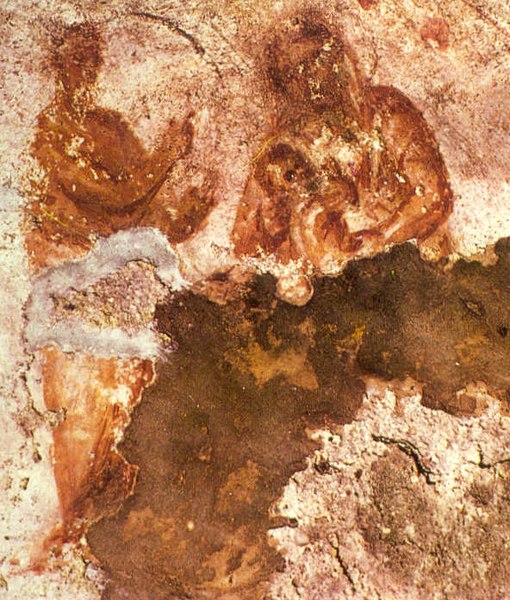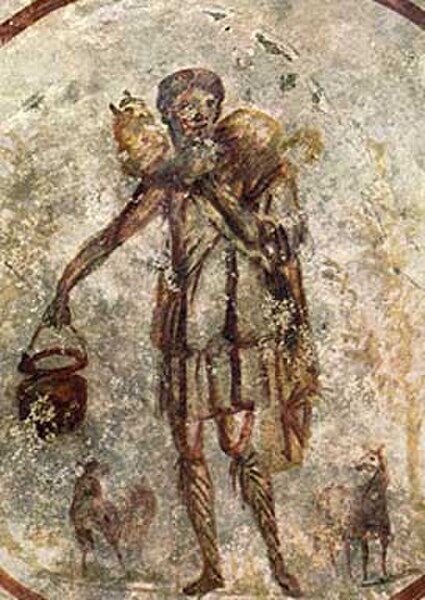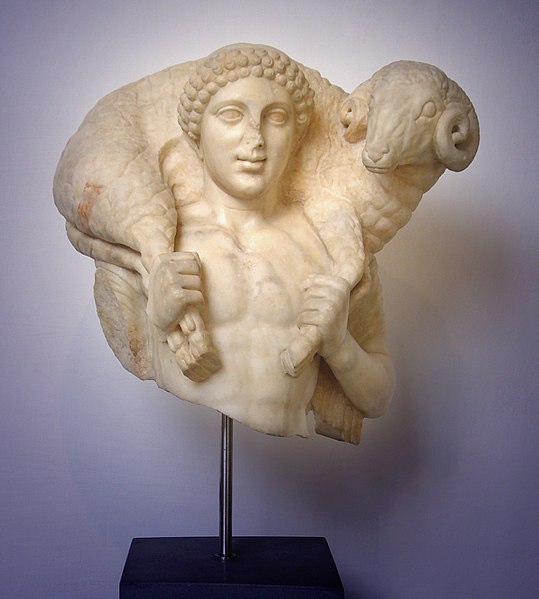The Catacomb of Priscilla is an archaeological site on the Via Salaria in Rome, Italy, situated in what was a quarry in Roman times. This quarry was used for Christian burials from the late 2nd century through the 4th century. This catacomb, according to tradition, is named after the wife of the Consul Manius Acilius Glabrio; he is said to have become a Christian and was killed on the orders of Domitian. Some of the walls and ceilings display fine decorations illustrating Biblical scenes.
Possibly an image of Mary nursing the Infant Jesus. 3rd century, Catacomb of Priscilla
Catacomb of Priscilla
The Good Shepherd is an image used in the pericope of John 10:1–21, in which Jesus Christ is depicted as the Good Shepherd who lays down his life for his sheep. Similar imagery is used in Psalm 23 and Ezekiel 34:11–16. The Good Shepherd is also discussed in the other gospels, the Epistle to the Hebrews, the First Epistle of Peter and the Book of Revelation.
The Good Shepherd, c. 300–350, at the Catacombs of Domitilla, Rome
Allegory of Christ as the Good Shepherd, 3rd century.
Late Roman marble copy of the Kriophoros of Kalamis (Museo Barracco, Rome)
At the Catacomb of Priscilla, Rome






